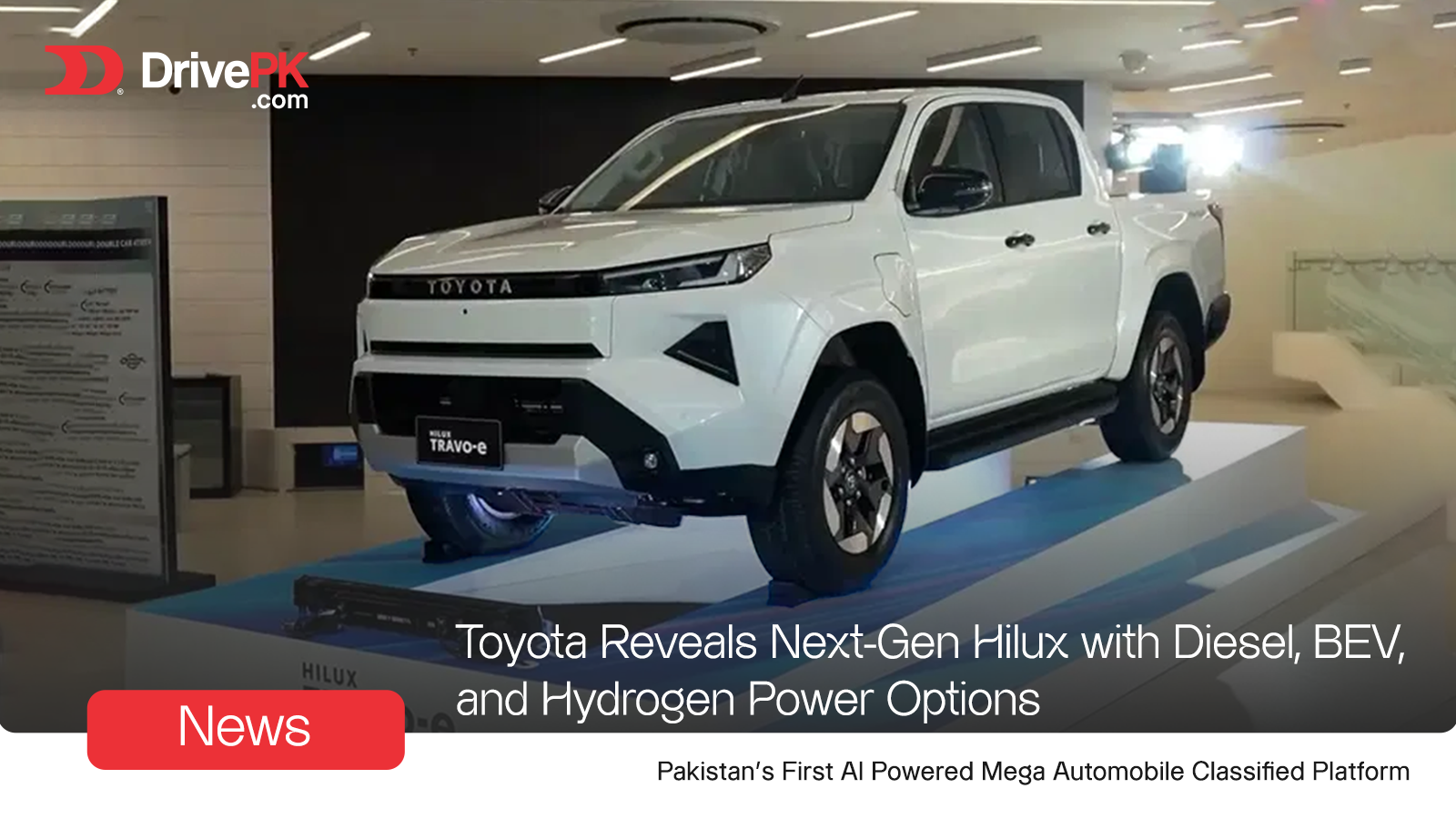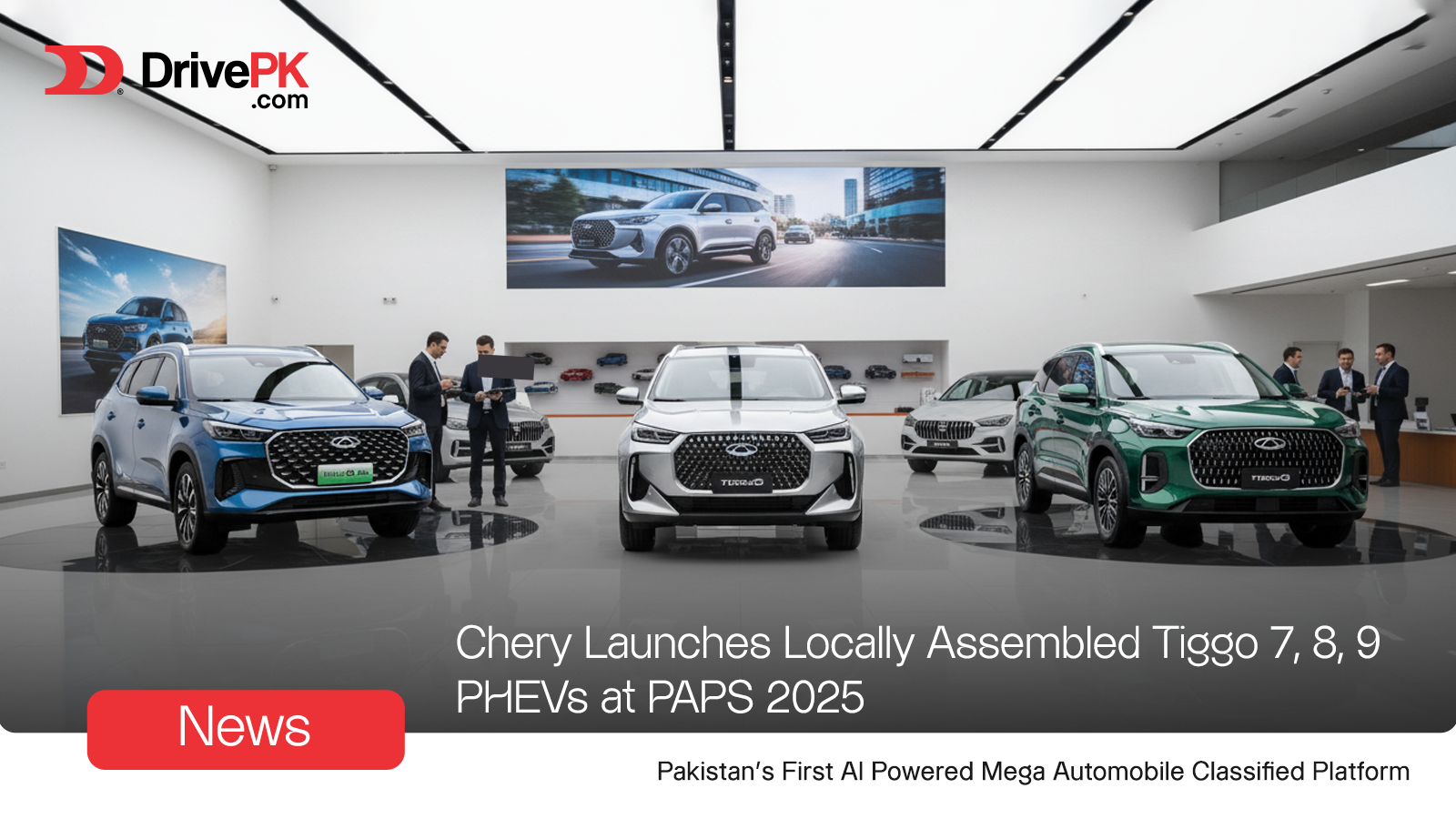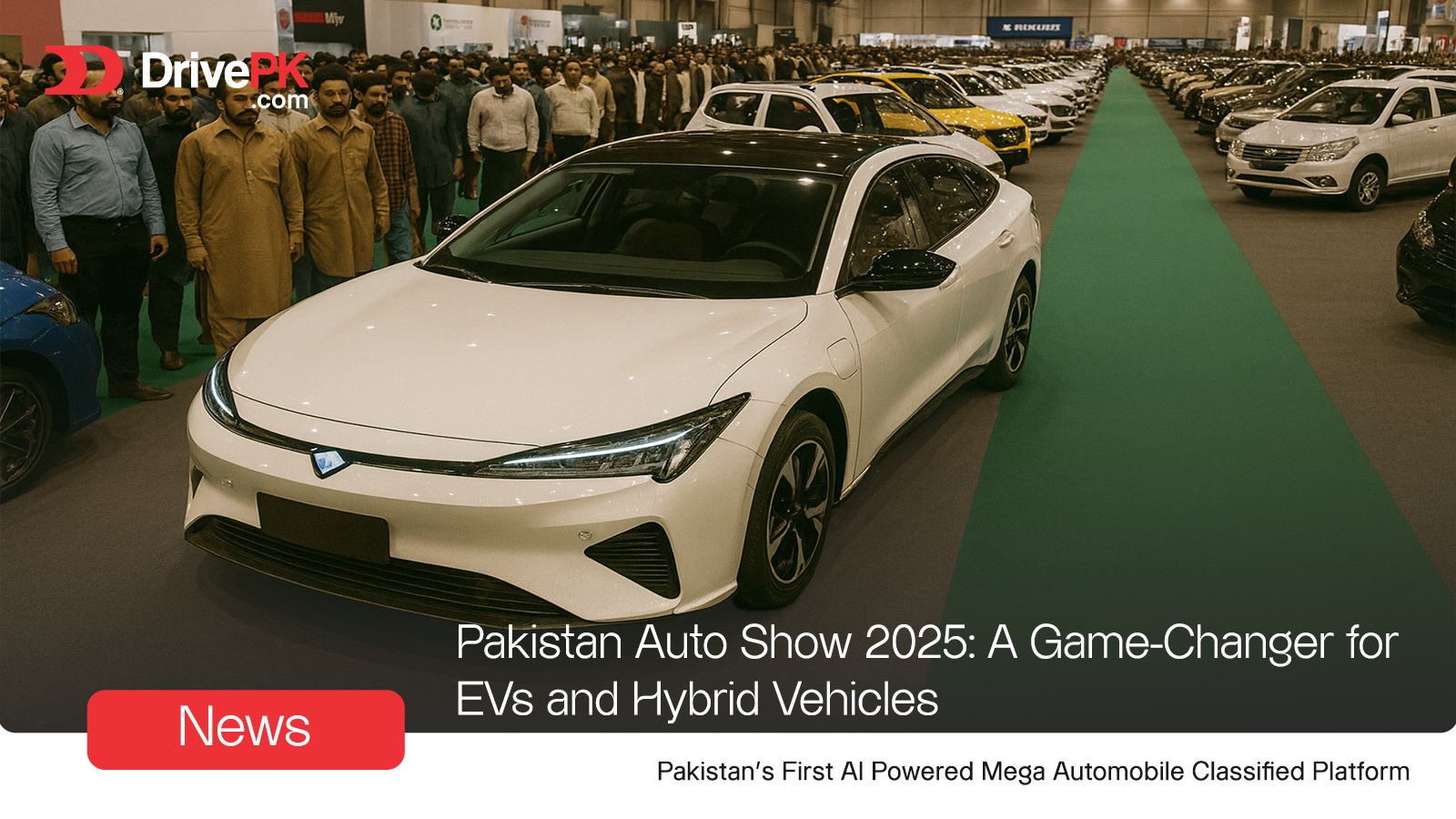Toyota Shows Off the New 9th-Gen Hilux
Toyota launches the 9th-generation Hilux with diesel, electric, and hydrogen variants. The BEV offers 300 km range, the diesel remains rugged, and the hydrogen FCEV arrives in 2028, marking Toyota’s biggest shift yet toward cleaner, tougher pickups built for every terrain.

Table of Contents
- Battery Electric Hilux Details
- Diesel Stays in the Mix
- Hydrogen Version Coming
- Rollout Timeline
- Built with Local Teams
- Cabin Upgrades
- Safety Kit
- Why the Mix of Powertrains
Toyota pulled the covers off the latest Hilux in Bangkok. This 9th-generation pickup comes with three power choices: diesel, full electric, and, later, a hydrogen fuel cell. It fits Toyota’s plan to cut carbon in many ways, not just one.
Battery Electric Hilux Details
The BEV version packs a 59.2 kWh lithium-ion battery. Toyota says it delivers over 300 km on a charge. Two high-output eAxles drive the wheels. That setup keeps the Hilux tough on mud, sand, or rocks.
A full charge at home takes about 7 hours on a 7 kW wallbox. Fast chargers can add 80% in 30 minutes. Payload stays close to 1,000 kg, and it still tows up to 3,500 kg.
Diesel Stays in the Mix
Most buyers will pick the diesel first. The 2.8-liter engine gets small updates for better fuel use. It meets Euro 6 rules without trouble. Expect 10 to 12 km per liter on highways, depending on load.
Toyota keeps the ladder frame and leaf-spring rear. That means the bed handles heavy gear without sagging. Ground clearance sits at 210 mm.
Hydrogen Version Coming
The FCEV Hilux arrives in 2028 for Europe and Oceania. It uses the same fuel cell stack from the Mirai sedan. Refuel in 5 minutes, range around 600 km. Toyota tests it now in UK ports.
Rollout Timeline
- Asia (including Thailand): BEV and diesel from mid-2026
- Japan: Diesel only, late 2026
- Europe/Oceania: FCEV by 2028
Pakistan might see the diesel model through Indus Motor by 2027. No word yet on local BEV plans.
Built with Local Teams
Toyota worked with plants in Thailand, South Africa, and Argentina. Each site adds parts that fit local roads. The frame welds in Samut Prakan, batteries come from Japan.
Cabin Upgrades
Inside, you get a 12.3-inch touchscreen. Wireless Apple CarPlay and Android Auto come standard. Rear USB-C ports keep phones charged on long hauls. Seats use tougher cloth that wipes clean after a dusty day.
Safety Kit
- 7 airbags
- Auto emergency braking with cyclist detection
- Lane trace assist on highways
- Blind-spot monitor with rear cross-traffic alert
Why the Mix of Powertrains
Diesel works where chargers are rare. BEV suits city fleets with depots. Hydrogen fits remote sites with refill stations. Toyota lets buyers pick what matches their routes.
The Hilux has sold over 20 million units since 1968. This new one keeps the tough core but adds cleaner options. Farmers, builders, and overland travelers get choices without losing strength.
Head to a Toyota dealer in 2026. Test the diesel first, then try the BEV when demos arrive. See which power fits your daily grind.For more updates, visit DrivePK.com
Tags
Share this article
About the Author
Najeeb Khan
Automotive enthusiast and writer
Comments (0)
Login Required
You need to be logged in to comment on this article.
No comments yet. Be the first to share your thoughts!
Related Articles

Chery PHEVs Shine at PAPS 2025: Tiggo 7, 8, and 9 Go Local
Chery unveiled the Tiggo 7, 8, and 9 PHEVs at PAPS 2025, offering strong hybrid power, long range, and local assembly advantages, ideal for Pakistan’s growing plug-in market.

Day 1 at PAPS 2025: Fresh Rides from Top Brands
PAPS 2025 Day 1 delivered major EV and hybrid debuts from Changan, MG, GAC, Chery, Suzuki, and Dongfeng, marking Pakistan’s strongest shift toward electrified and locally assembled vehicles yet.

MG Binguo EV Hits PAPS 2025: A Simple City Ride
MG introduced the Binguo EV at PAPS 2025, offering a 333 km range, compact design, and affordable pricing, plus a first look at the powerful MG U9 pickup for Pakistan.